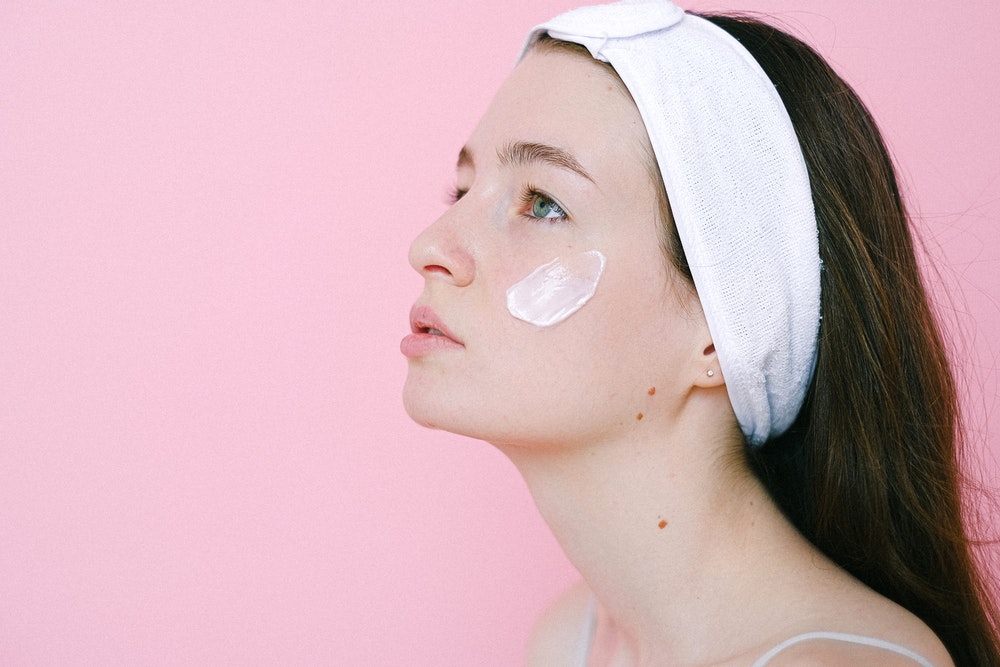Alpha hydroxy acids are known for their use as cosmetic aids. Generally they are used to expose healthier looking skin, reduce wrinkles and other signs of ageing. Dermatologists use alpha hydroxy acids in chemical peels. Beauty salons, health spas and home kits also offer these kinds of peels.
Benefits of alpha hydroxy acids
Ageing factors are largely determined by the dermis (the layer of skin beneath the epidermis). While the epidermis shows the signs of ageing, it is the dermis that must be treated. For a compound to be an effective treatment it must penetrate the epidermis to affect the dermis. All alpha hydroxy acids have a relatively high bioavailability which makes them effective at acting upon the dermis.
They increase the build up of protective cells through separation of the dermis from the lowest levels of the epidermis. Alpha hydroxy acids with a higher bioavailability penetrate deeper into the dermis and increase the production of collagen which thickens the skin and expedites the repair of light damaged skin.
Low concentrations of alpha hydroxy acids (between 5% and 10%) are safe enough to use every day. This is the most common over the counter products. Concentrations of 10% to 50% have more profound benefits, but they are also better for weekly or bi-weekly use. Concentrations of 50% to 70% are best used between three and eight minutes and under professional supervision.
These concentrations are best for treating acne and extreme light damaged skin. Single treatments can have beneficial effects, but for the longest lasting and most effective results, treatments should be repeated every two to four weeks.
The low concentrations of alpha hydroxy acids promote the exfoliation of the outermost layer of skin. This means the skin will have a smoother texture. A topical glycolic acid treatment can be used every day by itself or as part of a skin regimen. This is most effective for treating acne, light damage, melasma (and other pigment issues), and wrinkles.
If the user has sensitive skin, overuse of these acids may exacerbate problems instead of eliminating them. There are new formulas which mix the amino acid arginine which releases the alpha hydroxy acid over time instead of all at once and does not reduce the benefits of the acid. Anti irritants are also helpful to reduce irritation.
Stronger concentrations of alpha hydroxy acids have more pronounced effects, but they should only be used for temporary skin healing. These concentrations can also prepare the skin for the use of medical grade chemical peels. The highest concentrations produce the most drastic results, but the acid is too strong to remain on the skin for longer than three to eight minutes.
These treatments are most effective on uneven pigmented skin and wrinkles, but there are side effects in some users, such as: flare up of cold sores, increase in pigmentation, persistent redness and scarring. The use of topical vitamin A products can reduce these side effects.

Sources of alpha hydroxy acids
Fruit is the most common source of alpha hydroxy acids. While eating fruit has its benefits, the skin absorbs most of the chemicals rubbed over it. The chemicals in fruit can be helpful to improve problem skin conditions or maintain healthy skin.
The most common alpha hydroxy acids are citric acid (from citrus fruits), glycolic acid (from sugar cane), lactic acid (from milk), malic acid (from apples), mandelic acid (from almonds) and tartaric acid (from grape wine). Bioavailability is the determining factor on how effective an acid will be. Glycolic acid has the smallest molecular size and penetrates the skin most easily.
Alpha hydroxy acids were once only available in the dermatologist’s office, but in 1992 they were approved in lower concentrations for over the counter use. Since then they have been included in the production of acne treatments, lotion and other products. The standard formulas are greatly improved by the addition of these acids.
An alpha hydroxy acid skin care product can minimise fine lines and wrinkles. They can lighten skin discolouration and reduce the appearance of scars. Alpha hydroxy acids improve circulation to the skin. This means more blood flow gets to the skin.
Alpha hydroxy acids also exfoliate without abrasive chemicals. The skin is able to get more nutrients, moisture and oxygen (the chemical make up of alpha hydroxy acids includes oxygen). Dead skin cells at the surface of the skin are sloughed off leaving the skin still protected, but with skin that looks fresher.
Using over the counter alpha hydroxy acid skin products can bring changes in the appearance of the skin which happen gradually instead of instantaneous as with a chemical peel. Patience is needed with using over the counter products. It may not even be noticeable as the changes happen until encountering someone the user has not seen for a while.
This is especially true for people who are plagued by high concentrations of acne. Skin will get smoother and complexion will even out with time and continued use of alpha hydroxy products. The use of harsher exfoliating agents may only strip the skin of the protective layers of epidermis, but alpha hydroxy acids are a gentler alternative.
Potential side effects
Alpha hydroxy acids are weak acids and are generally safe when used at the recommended dosage. Common side effects include flaking skin, mild skin irritation, and redness. After using chemical peels there can be blistering, burning and skin discolouration, but these are mild and go away within a day or two.
The use of alpha hydroxy acids increases the sensitivity of skin to the light. This means the skin might be more easily burnt. Using sunscreen will reduce this risk.
Side effects are less likely to occur with lower concentrations of alpha hydroxy acids. Over the counter products are typically the lowest concentrations. The most apparent side effects are reddened skin. This redness looks and feels similar to sunburn. This kind of exfoliation also leaves the skin more susceptible to sun damage.
This increases sensitivity and redness go away as early as the next day, but for people who use alpha hydroxy acids on their skin on a daily basis, there should also be use of sunscreen whenever there are plans to be out in the sun for extended periods of time.
Those with super sensitive skin should be wary of using any sort of acid treatment. A good test to see how skin will react to the alpha hydroxy acids is to apply some to the wrist. Wait 24 hours and monitor the reaction of the skin. If there is redness which persists for longer than a day or so then this is probably not the right treatment. Common reactions to extra sensitive skin are blistering or persistent redness.
In conclusion
Alpha hydroxy acid based products are on the forefront of skin treatment no matter the damage and no matter the skin issues. Skin naturally becomes damaged through day to day activities. Exposure to the sun, cold weather, heavy winds, and chemicals from pollution can all take their toll.
Age increases the effect of this damage as it reduces the elasticity of the skin and increases the appearance of fine lines and wrinkles. It is never too late to try to improve skin condition. After the teen years, it is never too early to start to keep the skin looking fresh and young.






